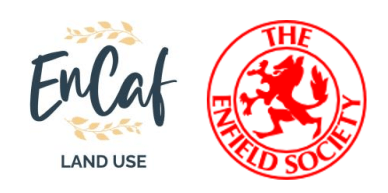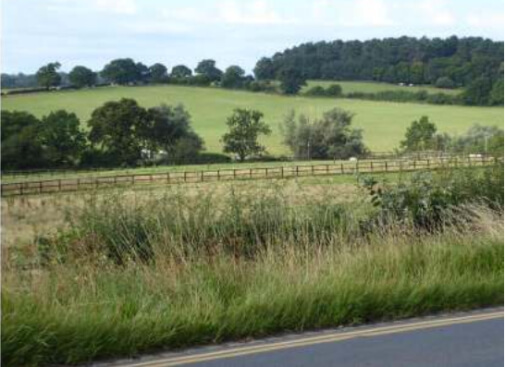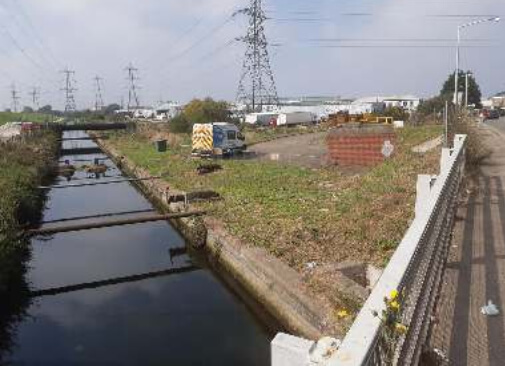 In the run-up to the end of the current consultation phase for the Enfield Local Plan (the deadline is Monday 13th September), the Enfield Society has published its response to Enfield Council's draft document. While welcoming some aspects, the Society completely rejects the idea of housing or other types of development being built on all but a very few small parts of the borough's Green Belt land. Another newly published response, from Enfield Climate Action Forum, voices similar criticisms from a primarily environmental sustainability perspective.
In the run-up to the end of the current consultation phase for the Enfield Local Plan (the deadline is Monday 13th September), the Enfield Society has published its response to Enfield Council's draft document. While welcoming some aspects, the Society completely rejects the idea of housing or other types of development being built on all but a very few small parts of the borough's Green Belt land. Another newly published response, from Enfield Climate Action Forum, voices similar criticisms from a primarily environmental sustainability perspective.
The Enfield Society - conserving and enhancing environments for the public benefit
The Enfield Society was founded in 1936 and its object is "the conservation and enhancement of the civic and natural environments in the London Borough of Enfield and its immediate surrounding area, for the public benefit". Over the years it has amassed a great deal of expertise and institutional memory relating to the borough's history, geography, population, economy, culture and much more, and this is reflected in the impressive scope of its response, contained in a 112 page document. Despite its size, the document is highly readable, clear and easy to follow - definitely a recommended read and not one that will send you to sleep!
Large sections of the Enfield Society response, illustrated by photographs of rural views that would be lost, relate to the proposal to build housing on two significant areas of Green Belt land, at Crews Hill and on former farmland between Trent Park and the Ridgeway (referred to by the council as "Chase Park"). Objections include: the threat to the heritage of the historic Enfield Chase and Enfield Old Park; the loss of well used walking routes with beautiful country views; and loss of the visual separation between Oakwood and Enfield Town provided by the experience of passing through open countryside on the A110 (not mentioned in the document, but this is best appreciated from the upper deck of a 121 or 307 bus).
 Rather than building houses on Vicarage Farm, to the west of the Ridgeway...
Rather than building houses on Vicarage Farm, to the west of the Ridgeway...
 ...the Enfield Society suggests regenerating land in the east to provide housing and employment
...the Enfield Society suggests regenerating land in the east to provide housing and employment
Despite this, the Society's submission is far from simply negative, as it sets out an alternative vision of a borough where currently neglected "strategic industrial land" south of the A406 in Edmonton and in Brimsdown is transformed by building a mix of housing and workplaces and wasted green areas adjacent to the Lee Valley reservoirs turned into parks, and where Green Belt land in the west of the borough is farmed sustainably.
EnCAF - viewing the plan from an environmental perspective
The second major submission comes from EnCAF - the Enfield Climate Action Forum, which draws on the expertise of members of around a hundred affiliated organisations. However, there is a very large overlap between EnCAF's and the Enfield Society's areas of interest and Enfield Society people are very active in EnCAF, so it's not surprising that the climate forum's input includes much of the same criticisms.
Introducing their submission, the EnCAF authors express approval of the key prioirities identified by the council:
- delivering 25,000 homes “for Enfield people”,
- a commitment to 50% genuinely affordable homes,
- being “deeply green”
- voiding skyscrapers in inappropriate locations
- protecting Enfield from “uncontrolled development” all over the Green Belt.
However, they doubt whether the plan would realise these goals, because at its heart are "too many contradictions, uncertainties and questions":
- How is building on the green belt, with the inevitable increase in motorised transport, “deeply green”?
- What is “genuinely affordable”?
- How is replacing viable agricultural land at Vicarage Farm, and a prosperous gardening centre at Crews Hill, with 6000+ homes helping Enfield adapt to the challenges of climate change?
- How can the proposals for 3000 homes on “Chase Park” (actually Vicarage Farm), ending centuries of protected access to the historic Enfield Chase and public rights of way such as Merryhills Way,
preserve our heritage?
- Will the plan really meet Enfield's housing needs?
All these questions, and more, are explored in some detail, and the council's proposals for the most part found wanting.
Like the Enfield Society submission, it's readable and the logic is easy to follow.



 In the run-up to the end of the current consultation phase for the Enfield Local Plan (the deadline is Monday 13th September), the Enfield Society has published its response to Enfield Council's draft document. While welcoming some aspects, the Society completely rejects the idea of housing or other types of development being built on all but a very few small parts of the borough's Green Belt land. Another newly published response, from Enfield Climate Action Forum, voices similar criticisms from a primarily environmental sustainability perspective.
In the run-up to the end of the current consultation phase for the Enfield Local Plan (the deadline is Monday 13th September), the Enfield Society has published its response to Enfield Council's draft document. While welcoming some aspects, the Society completely rejects the idea of housing or other types of development being built on all but a very few small parts of the borough's Green Belt land. Another newly published response, from Enfield Climate Action Forum, voices similar criticisms from a primarily environmental sustainability perspective.

